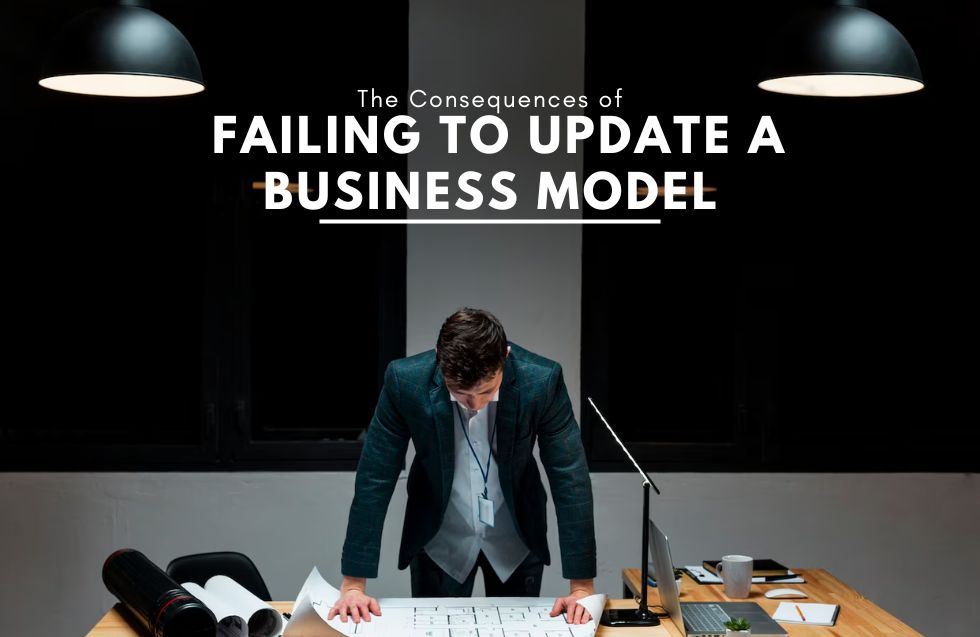In today’s fast-paced business landscape, evolving and updating your business model isn’t just an option—it’s a necessity. Companies that resist or delay adjusting their business models to adapt to market changes often face severe consequences, from declining customer loyalty to complete business failure. Let’s explore the key consequences of failing to update a business model and how businesses can avoid them.
1. Loss of Competitive Edge
One of the most immediate effects of not updating your business model is the loss of competitive edge. Competitors who embrace innovation, leverage new technologies, or respond to shifting customer preferences will quickly outpace companies that remain stagnant. For example, businesses that failed to adapt to the rise of e-commerce struggled significantly when customers began prioritizing convenience and digital shopping experiences.
Solution: Stay informed about industry trends and regularly evaluate your competition. Incorporate new technologies and customer-centric practices to maintain your position as an industry leader.
2. Decreased Customer Retention
Customers’ expectations are constantly evolving, driven by technological advances and social trends. A business model that doesn’t reflect these changing demands risks losing customers to more innovative competitors. For instance, companies that didn’t adopt digital payment systems or prioritize online shopping in recent years lost significant portions of their customer base to businesses that did.
Solution: Implement customer feedback loops and invest in data-driven insights to ensure your business is aligned with current customer needs.
3. Declining Revenue
Revenue is often the first casualty when a business model becomes outdated. As markets change, consumer behavior and spending habits shift. A rigid business model unable to adapt can lead to declining sales, reduced profitability, and unsustainable operations.
Solution: Regularly review your revenue streams and consider diversifying your offerings or tapping into new markets. Introducing subscription services, creating partnerships, or adopting a digital-first approach can help businesses stay profitable.
4. Operational Inefficiencies
Outdated business models can also cause internal inefficiencies. Processes that once worked may become redundant or inefficient due to technological advances or market changes. These inefficiencies not only waste time and resources but also slow down decision-making, leading to missed opportunities.
Solution: Optimize your operations by leveraging automation, modern software, and streamlined processes. A modern business model should emphasize agility and continuous improvement.
5. Brand Irrelevance
If a business model fails to evolve, the brand itself risks becoming irrelevant. Consumer preferences and cultural shifts can leave once-popular brands out of sync with the current market. A brand that doesn’t resonate with its audience is bound to lose relevance, especially when competitors are better aligned with customer values.
Solution: Consistently refresh your brand by updating your messaging, adopting modern marketing channels, and engaging with younger or evolving customer bases. Consider how sustainability, diversity, and technology trends affect your brand perception.
6. Failure to Scale
For businesses that aspire to grow, scalability is critical. However, a business model that’s inflexible or outdated may not be able to support expansion into new markets, industries, or demographics. Without updating the model to incorporate scalability, businesses risk plateauing, unable to capitalize on growth opportunities.
Solution: Design your business model with growth in mind. Evaluate your infrastructure, supply chain, and marketing strategies regularly to ensure they can support long-term expansion.
7. Missed Technological Advancements
Technological innovation continues to redefine industries, from AI and automation to blockchain and e-commerce platforms. Companies that don’t incorporate relevant technologies into their business model risk falling behind, missing out on cost-saving tools, efficiency improvements, and customer engagement opportunities.
Solution: Embrace digital transformation. Whether it’s implementing an AI-driven customer service system or using data analytics to optimize operations, businesses must integrate tech solutions to stay competitive.
8. Inability to Attract Top Talent
An outdated business model can also impact a company’s ability to attract and retain top talent. Today’s workforce, especially younger generations, is drawn to innovative, future-forward companies that embrace flexibility, technology, and sustainability. Without a modern approach, businesses may struggle to recruit the talent needed for long-term success.
Solution: Update your business practices to reflect modern workplace trends, such as remote work, flexible schedules, and professional development opportunities. Building an innovative and forward-thinking culture can be a significant advantage in talent acquisition.
9. Regulatory and Compliance Risks
In some cases, failing to update your business model may expose your business to legal risks. As regulations evolve—particularly in industries like finance, healthcare, and technology—businesses must ensure that their models comply with new laws and regulations. Non-compliance can result in fines, lawsuits, and reputational damage.
Solution: Stay updated on regulatory changes affecting your industry and proactively adjust your business model to ensure compliance. Consulting with legal and regulatory experts is crucial to navigating these changes.
10. Business Closure
The most severe consequence of failing to update a business model is the possibility of business closure. As revenue declines, inefficiencies multiply, and customer bases dwindle, businesses may reach a point where recovery is no longer feasible. Numerous well-known companies—such as Blockbuster and Toys “R” Us—serve as reminders of the dangers of remaining stagnant in a fast-evolving market.
Solution: Regularly reassess your business strategy to ensure it is adaptable and resilient in the face of market disruption. Create contingency plans and stay proactive in implementing necessary changes.
Conclusion: Adapt or Fall Behind
In a rapidly changing business environment, flexibility and adaptability are key to survival. By continually reassessing and updating your business model, you can stay competitive, meet customer needs, and position your company for long-term success. The consequences of failing to do so, however, can be devastating, leading to loss of revenue, customers, and, ultimately, the business itself. Embrace change as an opportunity to grow, innovate, and stay ahead in the marketplace.












